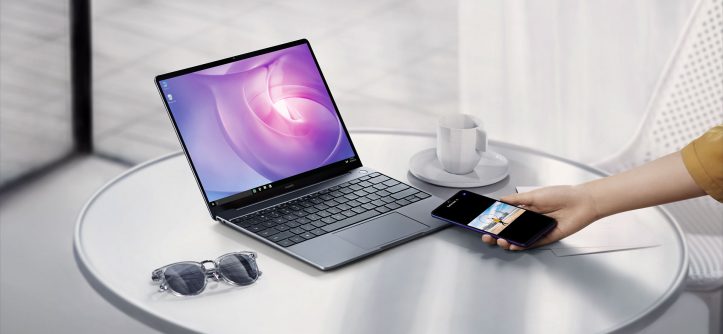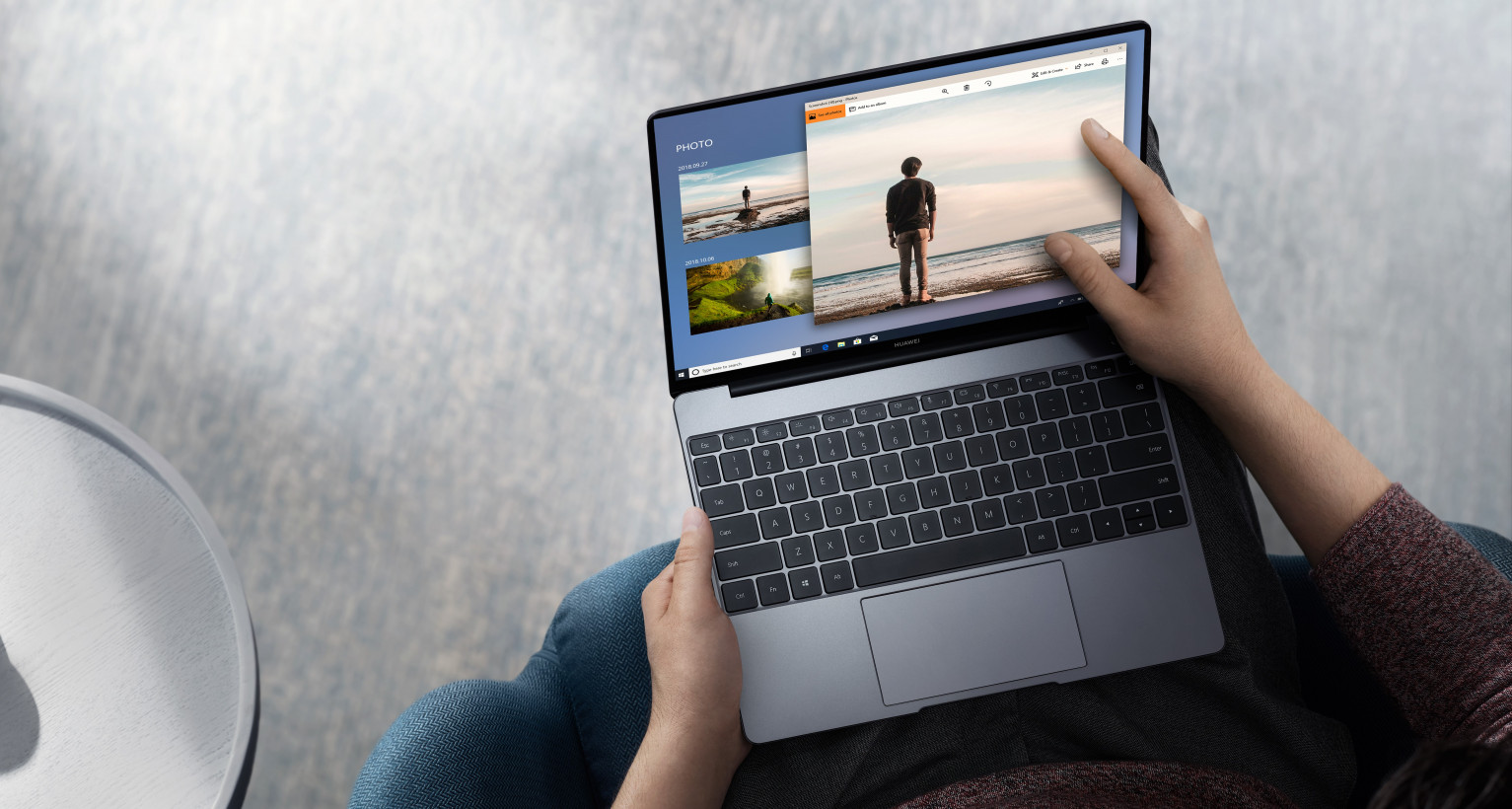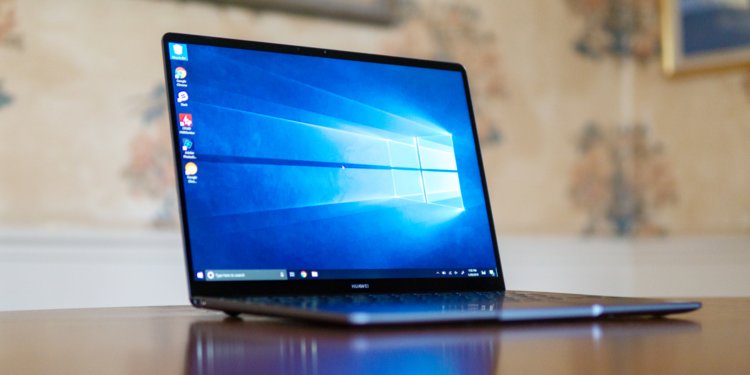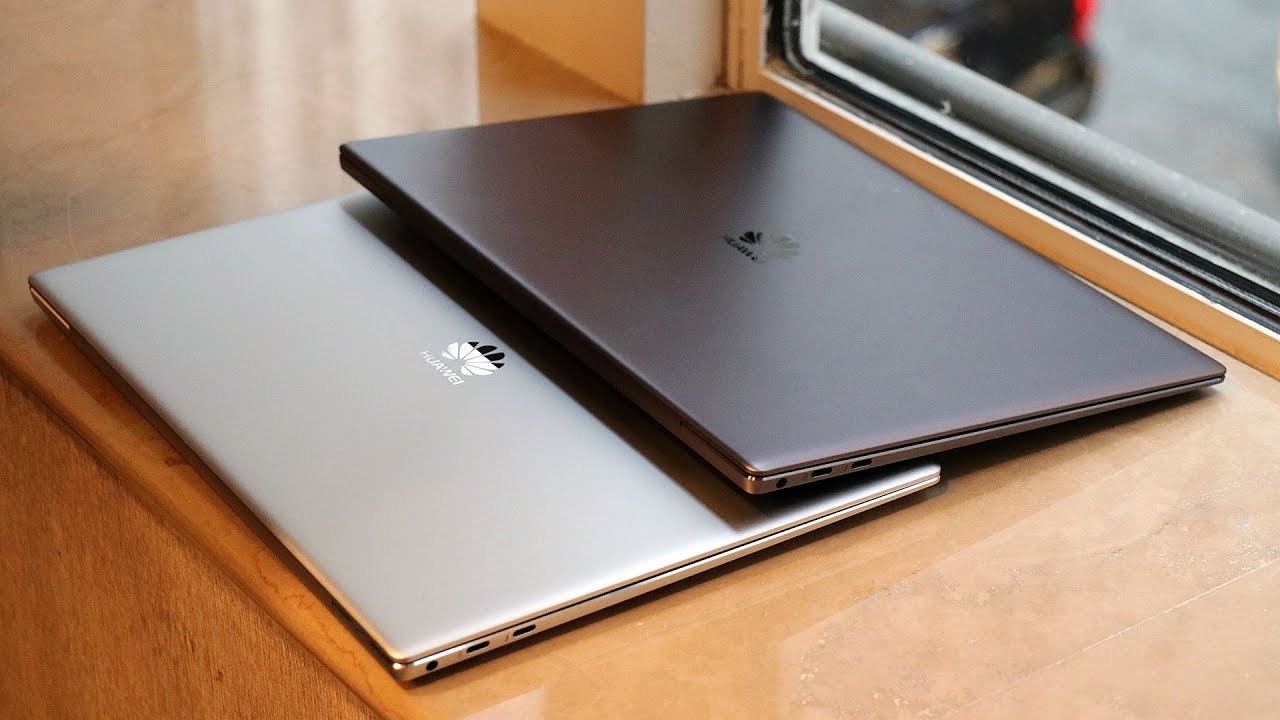MateBook 13 takes up all the valid technical features we had found in the predecessor MateBook X, changing a lot under the body. There are now quad core processors, managed by an efficient and very quiet cooling system. A classic Ultrabook suitable for the professional looking for a small, powerful and solid machine in construction.
If we mention the Huawei brand in a discussion among enthusiasts, the effect we obtain is that of being easily recognizable. The series of consumer products presented by the company, starting from smartphones, has allowed it to stand out by being recognized even at the level of non-enthusiast users as a technologically advanced manufacturer. Faced with this result, we need to smile back to our memory a little over 5 years ago: at that time the Chinese brand was unknown to the general public, who, after all, struggled a lot just to pronounce the name correctly.
A lot of water has passed under the bridges, up to the recent announcement of the P30 family’s smartphone terminals that are having great success especially for the photographic sector with which they are equipped. But Huawei is much more than smartphones and wearable devices: the company has a solid tradition in the world of tablets, while its business division is committed to developing communication infrastructures with particular emphasis on 5G.
It has therefore not surprised us, since the second half of 2017, to see Huawei’s commitment to move into the personal computer sector with a numerically reduced one but not for this less interesting family of notebook products. The MateBook X range, then expanded to the Mobile World Congress 2018 in Barcelona with the MateBook X Pro model, immediately became characterized by a research in design carried out with particularly interesting technological contents. Huawei’s presence in this market has been limited in terms of volumes, given the high-end positioning of these products, but it has clearly shown that even in this sector the Asian brand wants to conquer its own market share.
Also at the Mobile World Congress, last February, Huawei presented new models of its range of portable PCs. MateBook 13 is the proposal that we analyze in this article, in fact the updated version of the MateBook X that we had analyzed at its debut on the market and that already at CES in Las Vegas the company had shown waiting for the debut in the market.
Size and design in fact do not change: MateBook 13 is an Ultrabook characterized by a 13-inch diagonal screen, also offered in touch version, with an aluminum structure for the keyboard area, side profiles and the shell of the screen. The base keeps the same color but is made of plastic, so as to facilitate access to the internal components: it can be easily removed by acting on some screws. The screen frames are thin, only 4.4 mm on the sides, an element that gives overall cleanliness helping to reduce the overall surface of the notebook. The keyboard is well dimensioned: the keys have dimensions that are more than adequate with respect to the overall area and the overall robustness in the typing is generally appreciated.
It is evident that the MateBook 13 takes as its benchmark the Apple MacBook Air proposals: Huawei has never concealed its intention to contrast its own products with those presented by the American company, especially with reference to smartphones. The choice of the dark color for the external finish is a first element of distinction with respect to the concurrent solution, but we would have appreciated a clearer distinction in the form.
If seen from the outside, MateBook 13 is the copy of MateBook X, which, moreover, had decidedly convinced by design and choice of materials, it is under the shell that all the news are collected. Huawei has updated the hardware platform from the Intel Core i5-7200U processor of MateBook X to the 8000 series models in two distinct versions: Core i5-8250U or Core i7-8565U, the latter object of our analysis. The new models introduce quad core architecture, giving up something in terms of default clock frequency but doubling the number of cores compared to the 7000 series models.
There is also to highlight how these new processors of the 8000 family can operate, as the maximum Turbo clock frequency, up to values much higher than those of the 7000 models that preceded them. The consequence is a greater reactivity of the system even with those applications that by their nature are not able to make the most of the largest number of cores available. In the screenshot, for example, the value of 4.5 GHz was obtained during the execution of a test in single thread which then uses only one of the available cores.
The benefits of the quad core architecture of the Core i7-8565U processor used in MateBook 13 are well highlighted by the performance tests we conducted: the notebook responds quickly, allowing you to complete the various operations in times that are on average faster than to those of a system with dual core CPUs. In any case we must not forget how it is necessary to use applications that benefit from this number of cores: these are in fact the best conditions of use for this type of CPU.
The 512 Gbytes SSD of capacity used by Huawei in MateBook 13 stands out for its speed: we are well over 3 Gbytes per second of sequential read speed, with a sequential write data of almost 2 Gbytes per second. The almost totality of the notebooks on the market from the mid-range to go up is equipped with SSDs based on the PCI Express interface, thanks to which speed values well in excess of just over 500 Mbytes per second are obtained, which represent the limit of the SATA interface. However, among the PCI Express SSDs there are important differences and it is worth mentioning the choice of Huawei to equip itself with a particularly brilliant 512 Gbytes unit in this sense.
The 13-inch diagonal screen has a resolution of 2160X1440 pixels: the result is a ratio between the 3: 2 sides, a feature we saw promoted by Microsoft with its Surface range and more recently also by other companies for its own higher end notebooks. A report of this type allows you to increase productivity, as the vertical development is superior and this allows you to see a greater area of documents and web pages in the part, the vertical one, which is more important.
The external design of the notebook has in fact remained unchanged compared to that of MateBook X: therefore we find the two USB Type-C ports, one on each side, in addition to the inevitable headphone jack. Power is supplied by one of these connectors, in combination with the supplied fast-charging power supply. There is also a small USB hub, which expands the connectivity of the notebook by offering a USB Type-A port, a USB Type-C that can also be connected to the power supply, a VGA connector for secondary screen and an HDMI for the same use.
The presence of these two accessories completes the equipment of MateBook 13, embellished using a smartphone from the Asian company from Huawei Share. With this package you can synchronize the transfer of content on your Huawei smartphone directly on MateBook 13 so that it works as a backup. The operation uses NFC technology and happens in a very simple way, bringing the smartphone closer to the top of the notebook where the Huawei Share logo is present.
The battery integrated by Huawei in MateBook 13 has a capacity of 42Wh, a figure in line with that of the average of notebooks of equal size and functionality. The operating autonomy that we detected in our test with web browsing is generally discreet, reaching over 5 hours of continuous use.
The result is better in the reproduction of video streams with Netflix, where we went beyond the 8 hours of continuous playback approaching the best models in this test. The summary data that we can derive from this analysis of autonomy is that Huawei MateBook 13 manages to well combine compact dimensions, a powerful and complete hardware with a capacity of operation far from the socket that is overall very valid.
We will hardly be able to use it for a whole day’s work without connecting it to the power outlet, but in this the power supply that recharges the notebook very quickly comes to our aid. Huawei declares an autonomy of 2.5 hours with only 15 minutes of connection; in practical use we have found an almost complete recharge of the battery in just over 1 hour, an excellent result that allows you to give residual autonomy to work even with a short connection time to the mains.
The rear part of the chassis is in plastic material, easily removable by acting on a series of screws. This gives access to the SSD, battery and cooling system. This is a substantial difference implemented by Huawei in MateBook 13 compared to MateBook X, a system that was based on completely passive cooling with various heatpipes.
We believe that the choice of an active cooling system is preferable when one wants to exploit all the processing power made available by a processor with quad core architecture. This is well evidenced by the analysis of the CPU clock frequency under stress: with the MateBook X dual core processor, combined with passive cooling, the clock frequency stabilizes at full load at 1,500 MHz. With MateBook 13 the clock of the Core i7-8565U CPU remains at higher values, stabilizing around 2 GHz despite having two more cores in operation.
All this is achieved without the processor permanently reaching high values and with a functioning fan that in fact cannot be heard. Huawei indicates the cooling system with the name Shark Fin 2.0, focused on two fans that operate in parallel expelling hot air from a grid mounted close to the hinge that connects the screen and the base: its operation, in terms of silence, there has positively surprised.
As already anticipated, Huawei Matebook 13 is equipped with a 13-inch screen with resolzuone of 2160×1440 pixe, which returns a definition of 200 pixels per inch. Glossy finish and IPS panel complete the identity card of this monitor, which only at first glance suggests a rather interesting behavior.
And the colormeter analysis begins to confirm the initial impressions: the triangle di is slightly higher than the reference sRGB, and returns an excellent saturation of the primaries and a point of white that moves only slightly towards the greens.
This is a behavior that is also evident in the analysis of the white balance along all the levels of the gray scale: as we see with the exception of the very low lights, the green tends to have a very slight predominance over the other components of the RGB triad. This behavior, which however is not problematic, can be corrected, and with a good approximation, taking advantage of the controls made available by the panel of the Intel HD Graphics 620 video card.
The analysis of the gamma curve shows a correct and quite respectful behavior of the 2.2 standard, thus ensuring a correct reproduction of the progression of the grayscale tones. The maximum recorded luminance is over 284 candelas per square meter, and the native contrast ratio is 856: 1 compared to a black level of 0.332 candelas per square meter. Good result, in line with the expectations that can be nurtured towards an IPS panel.
The DeltaE value represents the distance between two points in the Lab color space and provides a useful indication to understand how much a color reproduced on the screen is faithful to the color defined by the source. In this case the comparison samples are the 24 colors present in the Gretag Macbeth Color Checker paper. It is good to keep in mind that a DeltaE value between 0 and 1 represents an almost not perceptible deviation to the naked eye and for some particular colors the human eye is not able to perceive DeltaE variations up to 3. How we see the panel records for the vast majority of colors, a DeltaE value of less than two and only in the gray samples there are values that exceed even DeltaE4.
In Matebook 13 we found all the features of Matebook X which, at the time of its review, convinced us. This Ultrabook has a design that is perhaps a little too close to that of the Apple Macs, but it is objectively difficult to be particularly original with a form factor of this type.
The dimensions are contained, thanks to the reduced frames: the 13-inch screen is an excellent compromise between bulk and productivity, with the strength of the 3: 2 ratio that we believe is a choice that other manufacturers should follow for their notebooks. Appreciable the presence of a fingerprint sensor on the power button: works with Windows Hello technology and allows you to perform authentication to the system very quickly. Other features such as the audio sector are also convincing: MateBook 13 is a complete product, which is well suited to responding to the use needs of those users who want a system that combines compactness and processing power.
MateBook 13 Huawei offers 3 different versions, with processor, screen type and onboard storage that change in this way …
- MateBook 13: Core i5-8265U CPU, 8 Gbytes of system memory, 256 Gbytes SSD, non-touch screen
- MateBook 13: Core i7-8565U CPU, 8 Gbytes of system memory, 512 Gbytes SSD, non-touch screen
- MateBook 13: Core i7-8565U CPU, 8 Gbytes of system memory, 512 Gbytes SSD, touch screen
Given the technical characteristics and the hardware equipment it comes to very interesting prices, which replicate what has already been offered by Huawei with the previous generation MateBook X and which suggest Huawei’s attention to the portable personal computer market.
Tags: Huawei, Huawei Matebook, Huawei Matebook 13







Leave a Reply